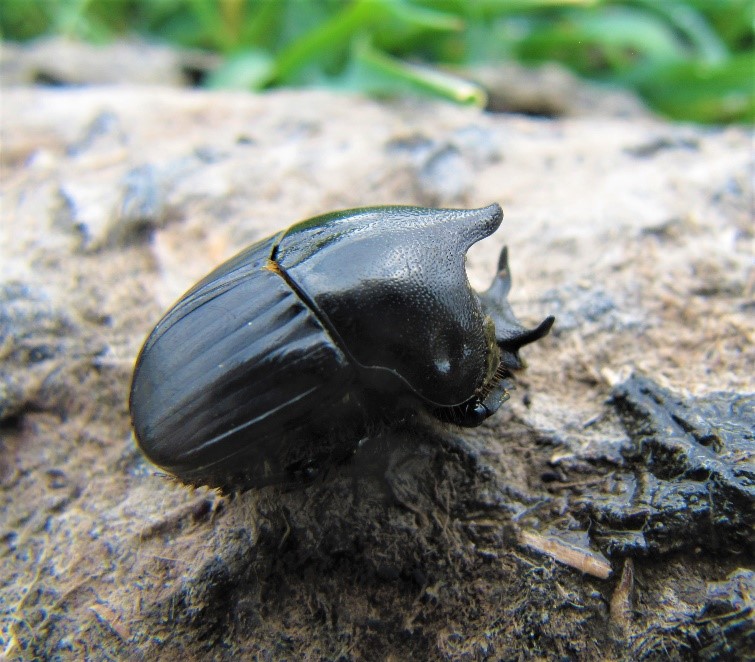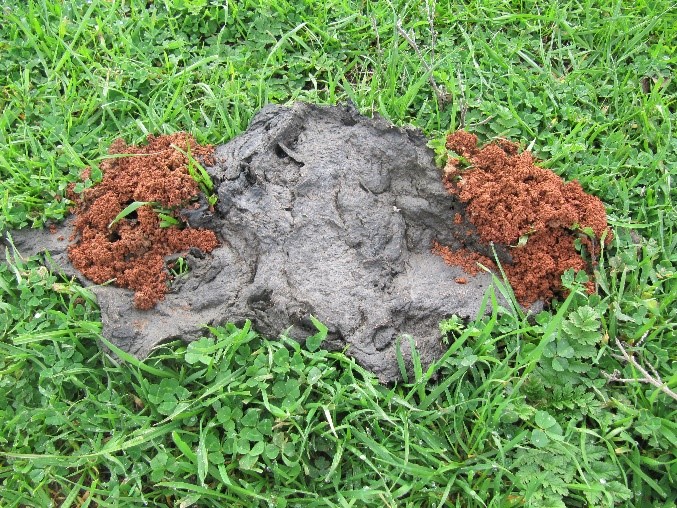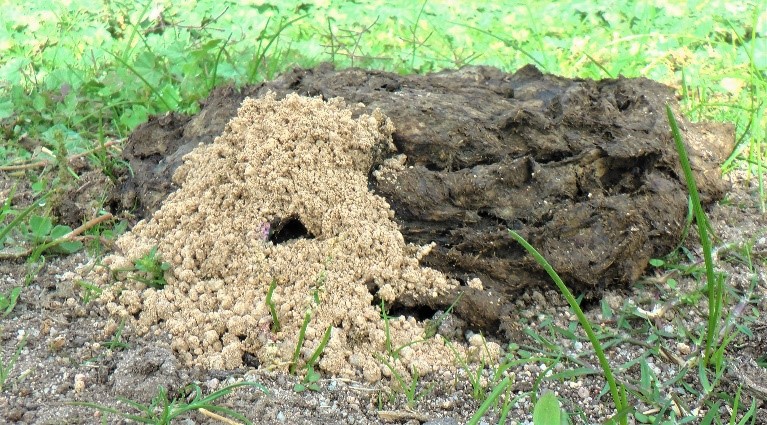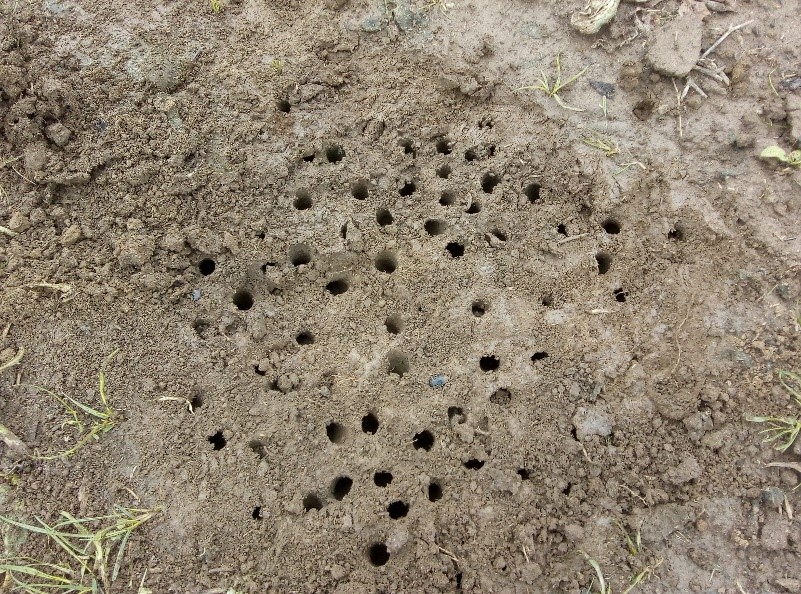Bubas bison was first introduced into Australia around Dardanup (WA) from southern Europe in April 1983 as a dung-burying beetle. Like most dung beetles imported into Australia, it has a preference for cattle dung but is known to also utilise sheep and horse dung. Bubas bison is a large black beetle (13-19 mm long), with major males having two prominent horns on the head and a distinct forward-facing projection on their pronotum (Figure 1). The adults emerge in autumn and are active throughout winter.

Its presence in pastures can be recognised by the prominent soil castings within and surrounding a dung pad, which are a consequence of the subterranean engineering these beetles are carrying out through their extensive tunnelling activities. The colour and texture of soil castings are excellent indicators of the reproductive status of the beetles; recently emerged beetles engaged in extensive feeding dig shallow tunnels and bring up reddish soils (Figure 2) whereas breeding individuals dig deeper tunnels and bring up clay-rich soils (Figure 3).


Dung pads may have in excess of 40 tunnels beneath them (Figure 4), each with a diameter of 1-2 cm and depths exceeding 40 cm. Each tunnel may contain one or more brood balls that each contain 2 eggs, with one at either end of a football-shaped mass of dung.
